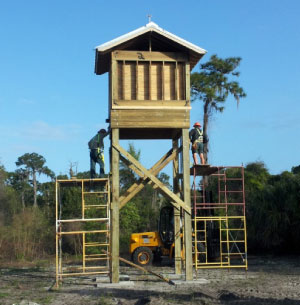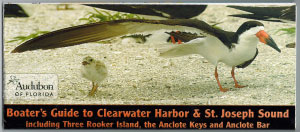[printfriendly]
Kill-A-Watt Tracks Energy Use
Through its Pinellas Energy Efficiency Project, Pinellas County Extension is promoting a new gadget that aims to get citizens more energy conscious and eco-friendly.
The Kill-A-Watt™ Energy Monitor is a simple tool used to see how much energy the devices in a home are actually using, whether they are on or off. Users simply plug the monitor into an outlet, plug an appliance into the monitor, follow The Kill-A-Watt’s™ instructions and watch it work. The monitor measures various aspects of electrical consumption, from voltage of an outlet to watts and kilowatt hours. Users can find out exactly how much energy and money is being consumed by most of their household electronics.
Pinellas County Extension and the Pinellas Public Library Cooperative have come together to make these Kill-A-Watt™ monitors available for check-out at their libraries. Extension specialists will also be holding upcoming classes at select libraries to further explain how the monitors work and to give easy tips to make a home more energy efficient in their effort to decrease electric bills and increase environmental friendliness.
For more information or to register for an upcoming event, visit www.pinellascountyextension.org.
Bat House is “Five-Star Resort”

A bat house that can accommodate up to 40,000 bats at the Florida Botanical Gardens in Largo is a “five-star resort” for animals that can each eat up to 3,000 insects per night. “That’s a lot of bugs,” exclaims Debbie Chayet, grants specialist for Pinellas County.
The bat house, funded with a series of minigrants from the Tampa Bay Estuary Program, was built by county employees with assistance from Cynthia and George Marks, founders of the Florida Bat Conservancy, and master naturalist John Hood.
“It should be in the perfect place to attract bats,” Chayet said. “It’s in an open area, up high, next to water and surrounded by conservation lands.”
Bats have been seen in the area, although much of their natural habitat has been destroyed. Experts say it may take two to three years for the bats to accept their new home. “Several species of Florida bats prefer living in these large colonies,” she adds. “We can’t wait for them to move in here.”
New Boater’s Guide Available

A Boater’s Guide to Clearwater Harbor and St. Joseph Sound is now available. Published by Audubon of Florida, the guide details both navigational features and the plants and animals that make the area one of the region’s most important areas for wildlife.
Important birds, including rare American oystercatchers, snowy plovers, reddish egrets and roseate spoonbills, nest in the area during the summer. Others, like the long-billed curlew, red knot and magnificent frigatebirds, visit seasonally.
For more information or to request a copy of the guide, visit Clearwater Audubon Society atwww.clearwateraudubon.org or Audubon’s Florida Coastal Island Sanctuaries at 813-623-6826.
New App ID’s Invasives
Every gardener knows there’s a thin line between an “easy to grow” and an “invasive” plant. A new app for both iPhones and Androids allows you to quickly check the status of a plant before you buy one. In the field, the same app pinpoints your location, uploads photos of the invasive and then provides information on controlling it. A separate section on invasive animals has great photos but less information on why the animal could damage Florida’s ecosystems.
Invasive plants and animals cost Floridians over $500 million per year. The goal of the new app is to help researchers identify potential infestations early so they are more easily controlled.
The free app, downloadable at www.eddmaps.org, was created in a partnership including the University of Georgia Center for Invasive Species and Ecosystem Health, National Park Service, Florida Fish and Wildlife Conservation Commission and the University of Florida Center for Aquatic and Invasive Plants. Along with the app, the website allows direct access to integrated invasive species reporting as well as a hotline at 1-888-IVEGOT1 for instant reports of live animals.
Maryland Posts Bounty for Snakeheads
Maryland’s Department of Natural Resources is passing out $200 gift cards to anglers who capture and kill snakehead fish. The ferocious invader from China eats everything from bass and other fish to birds and small mammals. In times of drought, it can live without water for up to four days.
Found in eight states — including a limited population in Broward County, Florida — the freshwater fish has no natural predators and reproduces incredibly quickly. A female can spawn 15,000 eggs at a time and typically mates five times a year.
The goal isn’t to eradicate the snakeheads, but to increase awareness of the need to control them, DNR officials say. A recent study found that when snakehead populations declined, populations of largemouth bass increased.
In some states, snakeheads are becoming known as a gamefish with one website describing catching one as “strikes like a cobra and fights like a bull.” They also are considered a delicacy in some cultures.
Water-Wise Competition Kicks Off

Just as we enter what is typically Tampa Bay’s driest season, Tampa Bay Water is accepting entries for the 14th annual Community Water-Wise Awards. The program recognizes individuals and companies that have created and maintained landscapes that are not only visually appealing, but water-efficient.
All residents, businesses, builders and other organizations in Hillsborough, Pasco and Pinellas counties as well as the cities of Tampa, St. Petersburg and New Port Richey are eligible to apply for the 2012 Community Water-Wise Awards.
Applications are available online at www.TampaBayWaterWise.org and must be submitted by June 30.
Artificial Reefs are Buried Treasure
Artificial reefs along Florida’s southwestern coast contribute more than $253 million to local economies, according to a report from Florida Sea Grant. The reefs, which provide habitat for popular sport fish and mother marine life, also supported more than 2500 jobs and generated more than $16 million in business tax revenues.
Although it costs no more than a saltwater fishing license, anglers and divers spend money on food, lodging, fuel and tackle. Visitors accounted for almost half of the total expenditures, bringing in about $117 million in new money. Counties, including Pinellas, Hillsborough, Manatee, Sarasota, Charlotte and Lee, generally invest about $20,000 to $60,000 per year in artificial reefs.
“That shows me that there is a lot of bang for the buck in terms of what the counties get out of the artificial reef program,” said Bob Swett, the Florida Sea Grant specialist who led the study.
On average, 5,600 people use artificial reefs per day for an annual total of more than two million person days. Other results show that both users and non-users are likely to support public spending on artificial reefs, with 61% to 71% of non-users supporting the use of public funds to provide and maintain artificial reefs.
For more information, visit http://flseagrant.org/images/PDFs/tp178_economic_impacts_artificial_reefs_web.pdf
Eco-Friendly Pest Control
Birds provide millions of dollars’ worth of pest control for farmers around the world, according to new studies released by the University of California Berkley and Humboldt State University in Arcata, CA.
The UCB study placed 200 bluebird boxes in vineyards and then mimicked an outbreak of beet armyworms. As expected, the bluebirds removed the larva, protecting the grape vines from one of their most important pests.
In Jamaica, coffee berry borers force their way into coffee beans, destroying the value of the crop. The Humboldt study placed tents over the coffee bushes to keep birds out. Damage was significantly higher in areas where birds could not eat the borers. The right species of birds can provide from $16 to $120 per acre in protection, the study concluded.
[su_divider]Originally published Spring 2014